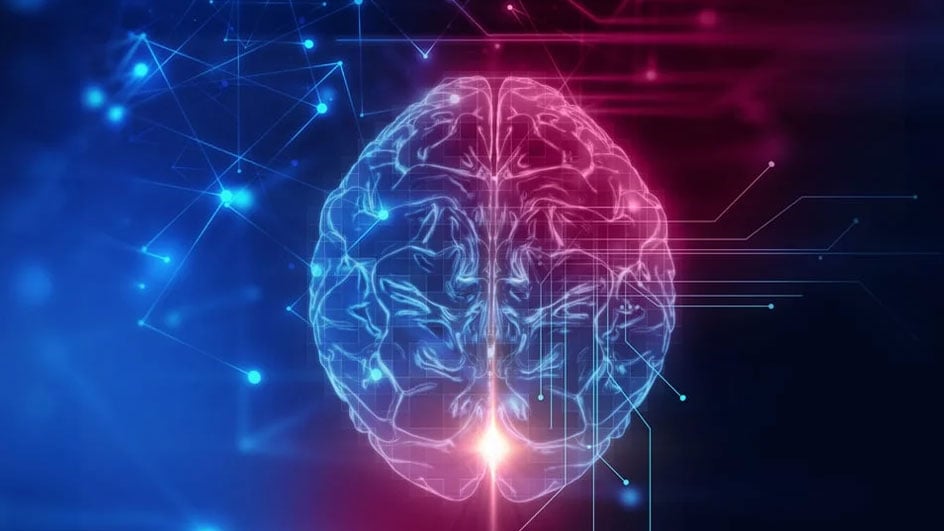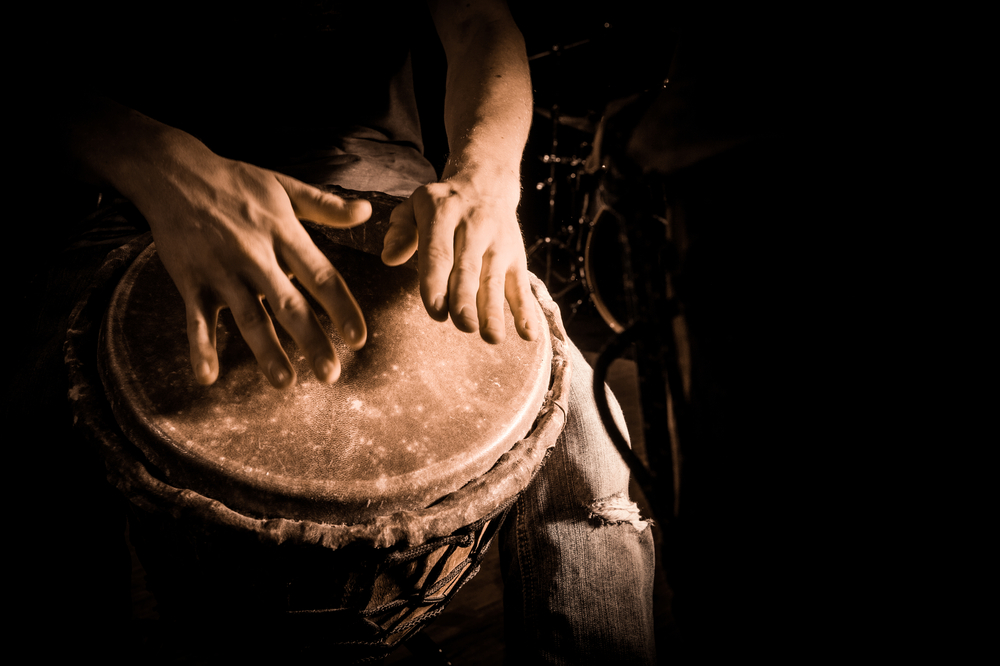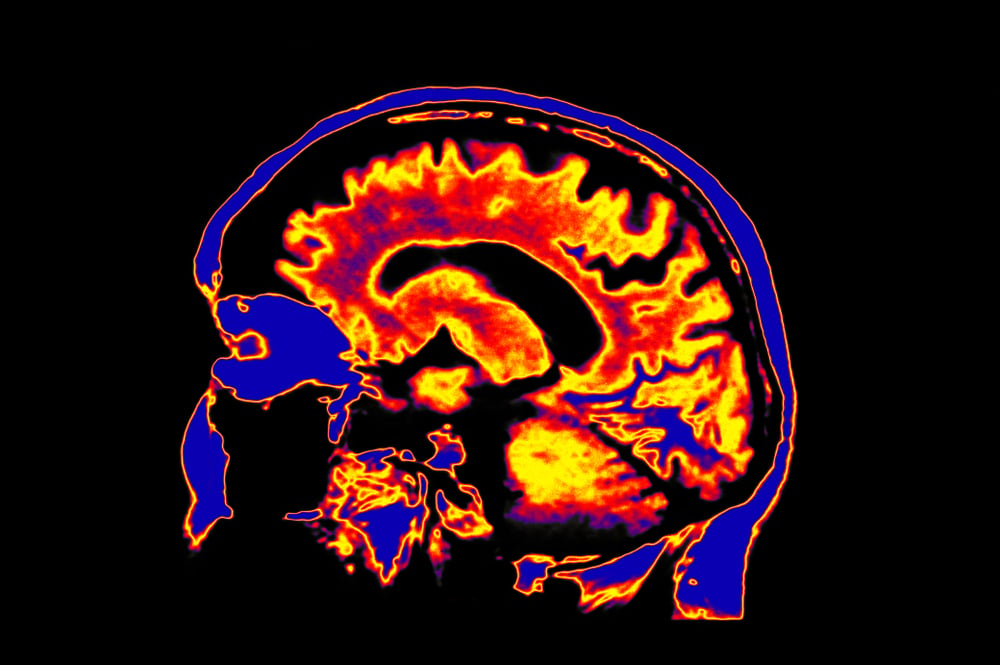Why Every Filmmaker Needs to Know What Music Does to the Brain Before Choosing Royalty Free Music
Soundstripe Team
Soundstripe Team

Nov 19, 2018
As a filmmaker, you already intuitively understand the power of music. It's the reason why the theme song to Jaws can still send shivers down your spine or why the opening chords of Star Wars makes your heart race with anticipation.
Music is one of a filmmaker's most powerful tools, but why does it create such strong reactions in an audience? More importantly, how can you use these insights to choose the best royalty free music for your next project? In this article, we will dive into the science of music and search the human brain for answers.
Let's find out what the human brain looks like on music.

Before we turn our gaze onto the human brain to learn what happens to our gray stuff during a classical music symphony or rock concert, let's first take a trip back in history. Music isn't just something we discovered when the Beatles released “Please Please Me.” It has been with us since our infancy. Before humans knew how to write, before we even knew our world was round, we were jamming on bone flutes, jaw harps, and drums. It's a core piece of human culture.
That's no surprise. Music seems to be wired into our brains, even before we decide to start listening to music. Infants will turn toward pleasant sounds and turn away from dissonant noise. They also respond positively to the soft lullabies sung by their mothers and fathers.
You could say that we humans are musical animals, but why?
Researchers and anthropologists have varying answers on how music affects us. Some believe that an appreciation of music must have given us a survival advantage, perhaps by aiding in courting rituals or improving social cohesion of a tribe. Others wonder if it's all just a big genetic coincidence.
Coincidence or not, music is an indelible part of our culture, our history, and the human condition. Something undeniably powerful happens to a brain while listening to music, and new studies add evidence of the brain-music connection every day.
Today, music therapy is regularly used as a treatment for stress, anxiety, and even attention deficit disorder. In fact, music therapy has been shown to lower blood pressure and can even help relieve the symptoms of Parkinson's Disease. Amazingly, patients deep into the fog of advanced Alzheimer's disease have been known to respond to their favorite songs from childhood and even sing along to the lyrics. (This was a major plot point in the fabulously popular and tear-jerking Disney/Pixar movie, Coco.)
For as long as humans have existed, music has enthralled us and joined us together. It's obvious that our brains are wired to respond to music, and the advent of brain imaging technology has finally allowed researchers to observe what happens in the brain when the harmony starts.

Think about all the times you started bobbing your head along with some upbeat music, found yourself staring out the window while listening to sad music, or pulled out your air guitar when your favorite band plays your favorite song at a concert. These aren't just examples of the ways music affects you — they're an indication of emotional responses because of the way music influences your brain function.
But what is that connection between the human brain and music, and which part of the brain plays a role in our love of different genres or certain songs?
For much of our history, doctors and researchers were left to tease answers from individual case studies of men and women who suffered brain trauma. In most cases, that involved people famous for playing music, and specifically their relationship with their musical instrument after some sort of significant life event.
There was the case of French classical music composer Maurice Ravel (1875 – 1937) who lost his ability to speak, write, and compose music as a result of aphasia even though he could still reportedly hear the notes of his next composition in his mind. Then there was British composer Benjamin Britten (1913 – 1976) who struggled to speak after a devastating stroke but was still able to continue writing music.
Recently, however, brain imaging technology has allowed neuroscientists to actually study the brains of subjects as they listen to music. The results have been fascinating. It turns out that no single area of the brain is dedicated to understanding and appreciating music. Rather, according to an article in Scientific American, “music engages many areas distributed throughout the brain, including those that are usually involved in other kinds of cognition. The active areas vary with the person's individual experience and musical training.”
What we do know is that when you turn on the radio, the sound of Nicki Minaj's newest hit is picked up by the 3,500 hair cells within your inner ear (called your cochlea). Your cochlea sorts the layers of sound into frequencies and then transmits them through auditory nerves as neural discharges. These neural discharges wash across the auditory cortex of the brain in the temporal lobe and spread throughout many other areas of the brain.
We got into all the specifics of this in an article on the psychology of music. But to explore that topic today, here are the primary areas of the brain affected by listening to music:
The temporal lobe is our brain's language center, and it's where we process the music we hear. Within the temporal lobe, the auditory complex sits just above the ears on each side of the brain. The auditory complex helps us distinguish and categorize the different parts of music, including volume, pitch, speed, melody, and rhythm.
The frontal lobe is where we think, plan, and make decisions. It is the key to our personality. And if you like to have some music on when you study, then you'll be happy to know that listening to music increases the performance of the frontal lobe.
This area of the brain helps us recall short-term and long-term memories, which means it's most famous for how you experience familiar music. If you feel a chill of expectation when the Indiana Jones theme starts, or if you can easily sing every lyric to “American Pie,” you have your cerebrum to thank for it. (This is also an interesting intersection for music therapy and brain health.)
Nestled below the cerebrum is the cerebellum, which is critical to physical movement. This obviously affects how we play music. When you walk across the room, throw a ball, or text your best friend, your cerebellum is what helps you accomplish all of these tasks.
Musicians rely on their cerebellum to pluck the right strings, press the correct keys, or hit the drum with the perfect amount of force. So if you are a musician curious about how your brain health impacts your own music, it's worth knowing that the cerebellum has a big impact on how you create the sound you need on your musical instrument.
All the swirling emotions that you feel throughout the day (from the frustration of a traffic jam, to the rush of love you feel when your dog covers you in happy face licks) come from your limbic system. And this isn't just tied to sad music or songs with clear lyrics in a spoken language — background music and film scores are responsible for some of the most powerful responses you've probably experienced.
The limbic system resides deep within the brain and functions as our emotional switchboard. If a song has ever lifted your heart, ratcheted up your adrenaline, or helped you feel better after a breakup, that's your limbic system hard at work.
Though music has been shown to affect so many different parts of the brain, the key to understanding its emotional resonance with your viewers is right here in the limbic system. Let's take a deeper look into this potent part of the brain.

The fact that your limbic system lights up like it's Christmas Eve when you hear a really great song gives us an idea of why music can be so enthralling (and why it needs to be a key part of your next creative project).
The limbic system is our emotional core, and it produces the chemical dopamine. This powerful chemical is what makes you feel so good when you win a hand at poker, get a “Like” on your Facebook post, down that huge slice of cheesecake, take drugs, and even have sex. Music can also cause the limbic system to produce dopamine.
That's right – according to Scientific American, “…the same kinds of pleasure centers light up in a person's brain whether he or she is getting chills listening to a symphony's denouement or eating chocolate or having sex or taking cocaine.”
No wonder every great movie that you know and love includes music. This is also why smart YouTube personalities and podcasters are using high-quality stock music to increase their audiences. It's not just an easy way to encourage emotional well being — it also just makes sense as a way to engage an audience at a neurological level.
When you start your next project, just remember that great music will give your viewers a few hits of dopamine, which will connect them even more deeply to your story. (No drugs necessary!)
Now that you know the human brain is primed to love and respond to music, it's time to start searching for the perfect melody for your next project. Filmmakers need to be careful as they search for stock music they can use in their video or film. A lot of the music on the internet is covered by copyright law, which means you can't use it unless you have permission from the music's owner or pay a royalty.
Royalty free music sites, like Soundstripe, offer you an easy and cost-effective solution. At Soundstripe, we give you complete access to our diverse music library with a single subscription. All of our music is royalty-free, so you never have to worry about running into any copyright trouble.
Instead, you can search our music library for the perfect tunes to trigger the right reactions in the brains of your viewers. We offer a wide variety of genres, and you can even search by emotion. We offer everything from YouTube background music to classical music and everything in-between.
Humans are musical animals. Our brains are built to connect our emotions with the music we hear. Use that knowledge to your benefit. Find the right royalty free music that will give your audience chills when they watch your next video.
Sure, listening to music is a satisfying experience. It's able to affect your mood, shift your emotions, and even improve your life — and yes, there's even science to back it all up. But choosing the right song is more than a way to increase dopamine or bring viewers to tears — it's also a legitimate way for you to improve your storytelling.
Even if a viewer's goal is to check out your video content, they will inevitable listen to the audio content. And that means you can discreetly get all the benefits of listening to music while delivering the film, vlog, or commercial that you envisioned.
And as you continue to investigate different music genres and sound effects to include in your videos, here are some other guides to help you land on the perfect tracks for your next project: